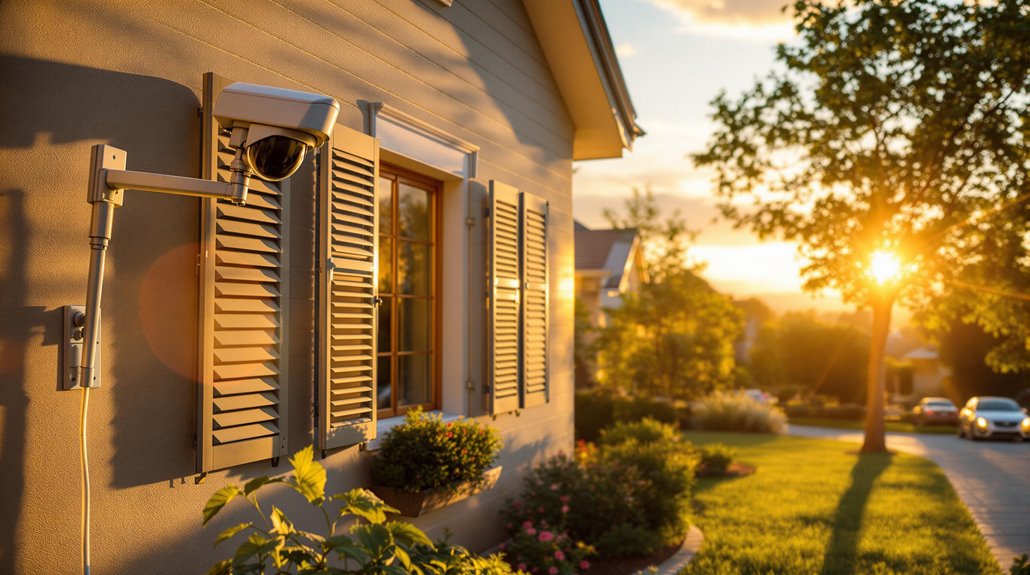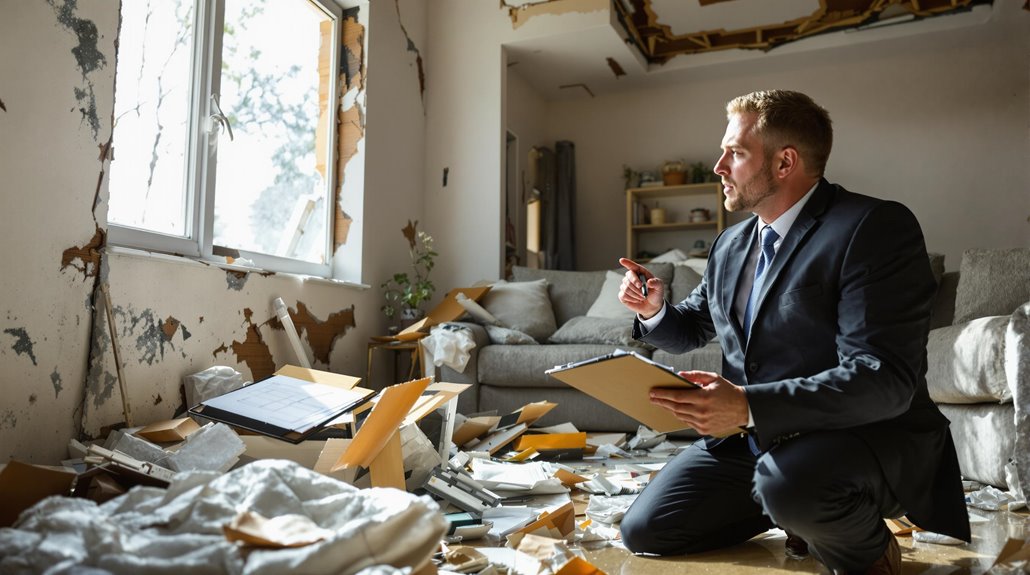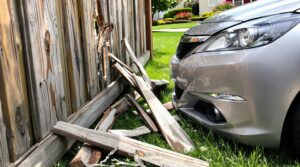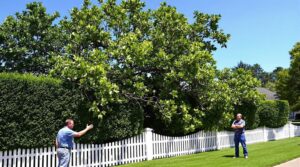Property damage is covered by various insurance policies, including homeowners, vehicle, and liability insurance. Homeowners insurance covers damages from wind, hail, theft, fire, and vandalism, while vehicle insurance includes extensive and collision coverage. Liability insurance, required by most states, covers damages to another person’s property after a car accident. Adequate coverage limits are essential to avoid financial loss. Understanding the nuances of property damage insurance can help individuals make informed decisions about their coverage needs. Additionally, homeowners insurance often extends to cover damages caused to neighboring properties in certain situations, making it crucial for homeowners to understand the implications of homeowners insurance and neighbor damage. It’s important to review the specific terms and conditions of a policy, as coverage can vary significantly between insurers. By staying informed about the limitations and exclusions of their policies, property owners can better protect themselves against unexpected financial burdens.
Key Takeaways
- Home insurance covers property damage from wind, hail, theft, fire, and vandalism, with deductibles and special limits for certain property types.
- Vehicle coverage includes all-encompassing and collision insurance, protecting against theft, vandalism, natural disasters, and automobile accidents.
- Property damage liability coverage is included in auto insurance policies, covering damages to another person's property after a car accident.
- Additional insurance options, such as umbrella coverage and specific insurance types, cover unique needs such as classic car, flood, and earthquake insurance.
- Homeowners and vehicle owners can also consider hiring public adjusters to ensure accurate damage evaluations and fair compensation from insurance companies.
Types of Insurance Policies for Property Damage
Property owners can mitigate financial losses due to damage by investing in various insurance policies. Two primary types of policies for property damage are home insurance and vehicle coverage.
Home insurance provides coverage for damage to homes and personal belongings due to various incidents such as wind, hail, theft, fire, and vandalism. Homeowners insurance typically has a deductible and may have special policy limits for certain types of property.
Vehicle coverage includes all-encompassing and collision insurance. All-encompassing insurance covers damages unrelated to auto accidents, such as theft, vandalism, and natural disasters. Collision insurance provides coverage for damages in the event of a covered collision.
Specialized policies may also be available for specific types of property or risks, such as earthquakes, hurricanes, or floods. By investing in these insurance policies, property owners can protect themselves from financial losses due to unexpected events.
Insurance policies can provide financial security and peace of mind.
Understanding your liability and medical coverage is essential when selecting a homeowners insurance policy.
How Property Damage Liability Insurance Works

Property damage liability insurance works by covering damages to another person's property following a car accident, with insurance companies evaluating the damage and paying for repairs up to a predetermined policy limit.
Policy limits for property damage liability coverage vary, and claims are often reviewed on a case-by-case basis.
The evaluation and claims process for property damage liability insurance involves determining the extent of damages and compensating the affected party accordingly.
Property Damage Liability Limits
Automobile accidents can result in considerable financial burdens, particularly when it comes to repairing or replacing damaged property.
Property damage liability limits are an important aspect of insurance coverage, as they determine the maximum amount an insurer will pay for damages. Each state sets its own minimum coverage requirements, which can vary substantially.
Policyholders can choose higher limits for added financial protection, but this typically results in higher premiums. Coverage options can be adjusted when purchasing or renewing a policy, allowing individuals to balance their financial needs with potential risks.
Claims adjusters conduct systematic examinations of property damage to determine appropriate settlement amounts within policy limits.
Assessing Accident Damage
In virtually every car accident scenario, evaluating the damage to property is a critical step in determining the extent of insurance coverage. Analyzing accident damage involves identifying the causes of accidents and evaluating repairs to determine the amount of compensation. The following table highlights key aspects of the damage assessment process:
| Property Type | Damage Evaluation | Insurance Coverage |
|---|---|---|
| Vehicles | Repair or replacement costs | Up to policy limits |
| Buildings and Structures | Repair or replacement costs | Up to policy limits |
| Landscaping | Replacement costs | Up to policy limits |
The insurance company analyzes the damage and pays for repairs up to the policy limits. If damages exceed the policy limit, the policyholder pays the excess amount. Understanding policy limits is essential to avoid out-of-pocket expenses. Transparent communication between all parties involved helps expedite the claims process and ensures accurate damage assessments.
Filing Damage Claims
How does one navigate the complex process of filing a damage claim when property is damaged or destroyed? Filing a claim requires prompt action to avoid losing evidence and delaying the process. The claimant must contact the insurance company, provide necessary information, and collect vital evidence to support the claim.
An insurance adjuster will assess the damage and determine liability. Thorough claim documentation, including photographs and witness statements, is important for a successful claim. Once the insurance company offers a settlement, the claimant can engage in claim negotiation if the settlement is not satisfactory.
Keeping detailed records of damage, expenses, and communication with the insurance company is essential. Effective claim documentation and negotiation are key to achieving a fair settlement. Working with public adjusters can increase property damage claim settlements by 30-50%.
Understanding State-Mandated Property Damage Liability Limits

State-mandated property damage liability limits dictate the minimum coverage required for drivers in each state, yet these limits vary considerably from state to state.
For instance, some states, such as California, require only $5,000 in property damage liability coverage, while others, like Texas, mandate a minimum of $25,000.
Drivers must consider not only their state's minimum liability coverage limits but also the importance of opting for higher limits to protect against financial liability in case of considerable damage.
Minimum Liability Coverage Limits
Although minimum liability coverage limits for property damage vary by state, they serve a uniform purpose: to guarantee that drivers have adequate financial protection in the event of an at-fault accident.
Liability coverage, a required component of auto insurance policies in most states, includes property damage liability, which covers damage to other people's property or vehicles. Insurance mandates dictate that drivers carry at least the minimum amount of property damage liability coverage specified by their state.
These limits determine the maximum amount an insurance policy will pay for a covered claim. The third number in the three-number format of liability coverage limits represents the property damage liability limit per accident, providing a safeguard against financial losses.
Drivers are legally required to meet these minimum limits.
State-by-State Limit Variations
Across the United States, a wide range of minimum property damage liability limits are mandated by law, resulting in considerable state-by-state variations. These variations reflect differing state requirements, leading to distinct liability differences. For instance, California requires a minimum of $5,000 in property damage liability, while Texas and Tennessee mandate $25,000.
| State | Minimum Property Damage Liability |
|---|---|
| California | $5,000 |
| Texas | $25,000 |
| Tennessee | $25,000 |
| Pennsylvania | $5,000 |
State variations in property damage liability limits underscore the importance of understanding specific state requirements. Liability differences can greatly impact insurance coverage and premiums. As a result, drivers must familiarize themselves with their state's minimum property damage liability limits to guarantee adequate coverage and compliance with the law. While not legally mandated, homeowners insurance coverage provides essential protection against property damage and liability claims.
Importance of Higher Limits
The varying minimum property damage liability limits across states underscore the need for drivers to contemplate the importance of higher limits in their insurance coverage. Exceeding state-mandated limits provides higher protection by covering more extensive damages, thereby reducing the risk of financial loss from lawsuits and asset seizure.
This also guarantees financial security by preventing financial disaster following an accident.
- Higher liability limits cover costs beyond the minimum required coverage.
- Carrying higher liability limits often results in better insurance pricing overall.
- Increasing liability limits beyond state minimums can save money in the long run.
- Higher limits guarantee financial protection for both policyholders and affected third parties.
Working with public adjusters can increase property damage claim settlements by 30-50% when losses occur.
The Importance of Having Adequate Property Damage Coverage

Having adequate property damage coverage is crucial for protecting one's financial well-being in the event of an unforeseen incident. Property damage liability coverage pays for damages caused to another person's property in an accident, and most states require a minimum amount of coverage. However, increasing coverage limits beyond the state minimum can protect assets and provide peace of mind. Working with public insurance adjusters can help increase property damage claim settlements by 30-50% over standard payouts.
| Coverage Type | Description |
|---|---|
| Property Damage Liability | Covers damage to others' property when at fault |
| Property Damage Coverage | Pays for minor accidents without determining fault |
| Collision Coverage | Covers damage to the policyholder's vehicle in an accident |
| Extensive Coverage | Covers non-collision damage to the policyholder's vehicle |
Evaluating coverage needs and developing effective claim strategies are essential in ensuring adequate protection. Consulting with an insurance agent can help determine the right coverage limits and options, such as additional coverage for criminal damage to property.
Factors That Affect Property Damage Insurance Premiums

When determining property damage insurance premiums, insurers consider multiple factors that ultimately influence the amount of coverage an individual needs and the cost associated with it. These factors can be broadly categorized into home-related, location, policy, and mitigation factors.
Some key premium influences include:
- Age and condition of the property, with older buildings typically having higher premiums
- Geographical risks, such as proximity to natural disaster-prone areas or high-crime neighborhoods
- Home improvements, such as installing safety features or reinforcing roofs, which can lower premiums
- Regional-specific mitigations, such as retrofitting homes to withstand earthquakes or hurricanes, which can also reduce premiums
Understanding these factors is essential to steering through the complex world of property damage insurance. Homeowners who work with public adjusters during claims can typically secure 30-50% higher settlement amounts for property damage.
Assessing Your Risk and Choosing the Right Coverage Limits

How accurately can one assess the risk of incurring costly damages to someone else's property after a car accident? Conducting a thorough coverage evaluation and risk analysis is essential in determining the right coverage limits. The goal is to minimize financial exposure in the event of an accident. Professional appraisals help determine accurate replacement costs for damaged property.
| Coverage Considerations | Recommended Limits |
|---|---|
| Average cost of damage | $5,700 per vehicle |
| High-value vehicles | $100,000 or more |
| Electric vehicles | Higher coverage limits due to expensive repair costs |
| Multi-vehicle accidents | $100,000 or more in damages |
| High-net-worth individuals | $250,000 or a combined single limit of $500,000 |
Choosing the right coverage limits requires careful consideration of potential damages and the cost of repairing or replacing property. A higher coverage limit can provide peace of mind and financial protection in the event of an accident.
Additional Insurance Options for Comprehensive Protection

Beyond standard coverage limits, various additional insurance options are available to provide extensive protection against unforeseen events.
These options offer enhanced financial security and peace of mind for individuals seeking all-encompassing coverage.
Umbrella coverage benefits policyholders by extending liability limits, while specialized protections cater to specific needs.
Public adjusters can help property owners understand their coverage options and navigate complex insurance claims.
- Classic Car Insurance: Tailored coverage for vintage or classic vehicles, addressing unique valuation and restoration challenges.
- Flood Insurance: Covers damage from flooding, a common exclusion in standard policies.
- Earthquake Insurance: Provides coverage for earthquake-related damages, essential for residents in high-risk areas.
- Umbrella Insurance: Extends liability coverage beyond standard policy limits, offering increased financial protection.
Customizing Your Policy to Meet Your Specific Needs

Property owners can further enhance their financial security by tailoring their insurance policies to address specific needs and risks. This is achieved through a thorough policy evaluation to identify areas requiring customization.
Coverage customization involves evaluating the type of property, its value, and potential risks such as theft, fire, or natural disasters. Checking the need for replacement cost or actual cash value coverage is also vital.
A well-tailored policy should also consider industry-specific risks, high-value assets, and professional services with unique risk factors.
Liability limits and deductibles should be carefully chosen to balance out-of-pocket costs and premium savings. Regular policy reviews and updates are necessary to guarantee continued relevance and adaptability to changes in business operations or risk factors.
The Benefits Of Consulting A Public Adjuster

Consulting a public adjuster can provide property owners with expertise in insurance claims, ensuring that they receive fair compensation for damages.
A public adjuster's objective damage assessment and knowledge of insurance procedures can streamline the claim process, reducing the burden on policyholders.
Expertise In Insurance Claims
Numerous policyholders struggle to navigate the complex process of filing insurance claims, often resulting in delayed or inadequate settlements. Consulting a public adjuster can mitigate these issues by leveraging their expertise in insurance claims.
Public adjusters possess in-depth knowledge of insurance policies and procedures, enabling them to interpret policy details and navigate claims processes effectively.
- *Extensive understanding of insurance policies and procedures*
- *Skilled in fine print interpretation to guarantee all entitled benefits are claimed*
- *Awareness of policyholders' legal rights under insurance contracts*
- *Knowledge of regulatory requirements affecting insurance claims, reducing the risk of insurance fraud and promoting claims transparency*
Objective Damage Assessment
When policyholders file insurance claims, an unbiased assessment of property damage is vital to guarantee fair compensation. A public adjuster can provide an objective damage assessment, utilizing objective criteria to evaluate the extent of the damage. This assessment is essential in identifying all eligible costs related to the claim.
| Benefits of Objective Damage Assessment | Outcomes |
|---|---|
| Accurate Identification of Damage | Guarantees all damage is accounted for, including hidden damage |
| Expert Documentation | Provides thorough documentation to support claims |
| Maximizing Compensation | Enables fair settlements and maximum compensation |
| Reducing Stress and Time Consumption | Handles paperwork and administrative tasks, freeing property owners to focus on recovery |
| Objective Evaluation | Utilizes objective criteria for damage evaluation, guaranteeing accurate assessments |
Streamlined Claim Process
A significant advantage of working with a public adjuster is the streamlined claim process they facilitate. By leveraging their expertise and knowledge of insurance policies, public adjusters can optimize claim efficiency and guarantee documentation accuracy. This results in a smoother and faster claims process.
Some key benefits of a public adjuster's streamlined claim process include:
- Assisting in gathering and organizing necessary paperwork to reduce the risk of claim rejection or underpayment
- Preparing detailed reports and documentation to support fair and timely settlements
- Confirming all required paperwork is submitted on time to meet deadlines
- Minimizing the time and effort required from policyholders during the claims process, allowing them to focus on recovery
Higher Claim Payouts & Settlements
While managing the complexities of insurance claims can be challenging for policyholders, consulting a public adjuster has proven to yield significant benefits, particularly in securing higher claim payouts and settlements. Public adjusters bring expertise in claim valuation, accurately evaluating property damage, and identifying all damages. Their settlement strategy involves skilled negotiation with insurance companies to guarantee fair compensation.
| Benefits of Public Adjusters | Results |
|---|---|
| Accurate evaluation of property damage | Maximized settlements |
| Expertise in insurance policies and procedures | Thorough claims documentation |
| Skilled negotiation with insurance companies | Fair compensation and higher payouts |
| Effective management of the claims process | Reduced stress and increased efficiency |
About The Public Claims Adjusters Network (PCAN)

The Public Claims Adjusters Network (PCAN) is a collaborative organization of licensed professionals dedicated to providing policyholders with expert guidance and support in managing the complex process of insurance claims.
PCAN's primary objective is to empower policyholders to navigate the intricate process of damage claims, which is frequently studded with uncertainty, by offering extensive claim support.
By utilizing public claims adjusters affiliated with PCAN, policyholders can access the full range of Public Adjusters Benefits.
- Unwavering advocacy and tailored guidance in evaluating and substantiating damages through elaborate claim documentation
- Highly specialized negotiation techniques with the purpose of securing higher claim settlements and oath keepers to policyholders interests
- Claim preparations which closely correspond to each situation to pinpoint unseen destruction early
- An environment supportive of continuous learning and assistance which streamlines the claims workflow
References
- https://study.com/academy/lesson/property-damage-coverage-definition-types.html
- https://www.valuepenguin.com/property-damage-liability-car-insurance
- https://openlibrary-repo.ecampusontario.ca/jspui/bitstream/123456789/557/15/Communication-at-Work-1550774380._print.pdf
- https://www.nerdwallet.com/article/insurance/property-damage-liability
- https://www.thezebra.com/auto-insurance/insurance-guide/property-damage-liability/
- https://www.travelers.com/resources/home/insuring/should-i-file-a-property-damage-claim
- https://quizlet.com/188759142/chapter-12-property-insurance-flash-cards/
- https://www.thedesirlawfirm.com/types-of-property-damage-coverage-under-a-typical-policy/
- https://www.progressive.com/answers/car-damage-to-home-or-property/
- https://tgsinsurance.com/texas-auto-insurance/property-damage-liability/








